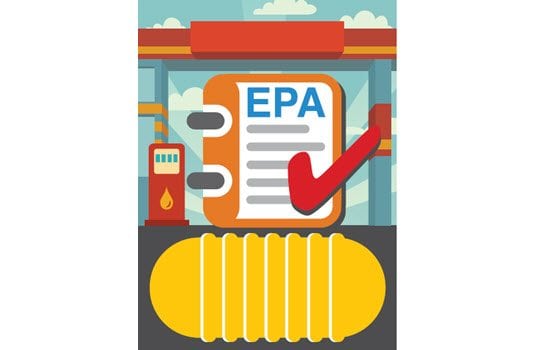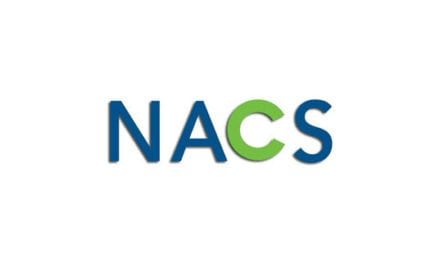By W. Brian Reynolds
When I was growing up, my mother used to tell me to study hard and go to college, or I would end up digging ditches or pumping gas for a living! So, what did I do? I went to college and studied geology so I could dig really nice ditches, and I still ended up pumping gas for a living!
The pumping gas part of my career hasn’t been too bad of an existence, but depending on the circumstances, digging ditches was sometimes the by-product of something bad, such as a product-line leak. Obviously, leaks are expensive for no other reason than the loss of product, but the truly expensive part of the leak may be the cleanup and potential fines for non-compliance. Throughout the 1980s and ‘90s, we all heard horror stories about the Environmental Protection Agency (EPA) or a State enforcement-equivalent issuing fines for what many considered to be “new regulations,” when in fact they might have been non-enforced laws for several years.
Heavy-handed environmental enforcement started to occur in the late ‘80s, so by the turn of the century, most of the big problems had been cleaned, removed or replaced with entirely new equipment on site. In recent years, there hasn’t been a lot of talk regarding egregious regulations from the EPA. The industry has gotten used to environmental compliance and today, the standard is adhering to environmental mandates.
In our industry, there is always something going on that you should stay on top of. Planning ahead is easier said than done. With the rapid pace of government growth over the past seven years, guess what? They’re back! It’s our old friends from the EPA, and this time they’ve brought lots of reinforcements.
The EPA continually modifies and releases environmental guidelines for petroleum storage tank systems, operations and maintenance requirements. For example, in the July 15, 2015, Federal Register, EPA published the 2015 underground storage tank regulation and the 2015 state program approval regulation. The revisions strengthen the 1988 federal underground storage tank regulations by increasing emphasis on properly operating and maintaining UST equipment.
One thing I was glad to see in the current EPA material is that statistical inventory reconciliation (SIR) is still one of the approved leak detection methods. I was also relieved to see a detailed description of this common-sense method to further understand that proven concepts will continue to be acceptable.
“SIR can allow the owner or operator of a UST facility to meet leak detection requirements without an extensive outlay of capital, using only the equipment that most facilities have readily at hand—a tank stick and a tank chart used for inventory control.”
http://www.epa.gov/sites/production/files/2014-03/documents/sir.pdf
SIR is one of the most effective ways to safeguard against unruly EPA enforcement. There’s nothing better than to proudly present—as evidence to an EPA field agent during a crisis—a good old-fashioned set of complete and up-to-date records made from paper, especially if it’s on recycled paper.
Meticulous but fraudulent reports are extremely difficult to produce on demand, so the old adage “the best defense is a good offense” works very well with the EPA, or in other words: it’s actually easier to do it right. You just can’t fake reams upon reams of daily inventory reconciliations and investigators know this. Agents actually love to see a presentation of paper reports because it will prove that as an operator, you have been playing by the rules and without having to look too hard, prove that daily/monthly reconciliation took place.
The biggest downside of the DIY approach to SIR is that you’d better be doing it. The most reliable method for conducting SIR is to use an EPA-approved vendor to do so as a monthly service. This can be done in a cost effective, automated fashion and environmental regulators like it when they know that an approved service provider did the work.
Using an EPA-approved service company to provide SIR reports each month along with archived automatic tank gauge (ATG) alerts and alarms will keep a regulator from saying, “Egad!” during a crisis and instead have them saying, “Excellent!”
 Brian Reynolds has been a petroleum marketing professional for over 40 years. He began his career as a youth working in family owned petroleum marketing company in Cisco, Texas. Reynolds was a pioneer in the field of high volume supermarket fueling. The business model invented has been one of the most copied in high volume supermarket petroleum retailing for the past 20 years. He is currently a major account representative at Simmons Corporation, which was recently acquired by Wayne.
Brian Reynolds has been a petroleum marketing professional for over 40 years. He began his career as a youth working in family owned petroleum marketing company in Cisco, Texas. Reynolds was a pioneer in the field of high volume supermarket fueling. The business model invented has been one of the most copied in high volume supermarket petroleum retailing for the past 20 years. He is currently a major account representative at Simmons Corporation, which was recently acquired by Wayne.








